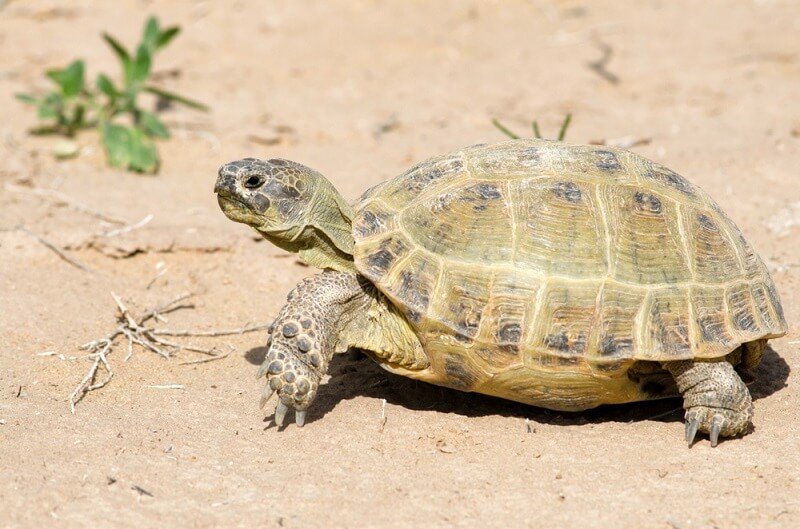
You might be surprised to learn that while they aren’t ferocious creatures, there are a few things we should consider. Like any animal, they have their quirks and behaviors that could lead to unexpected situations. Today, let’s dig into the world of the Russian tortoise and uncover what makes them tick. We’ll explore their temperament, potential health risks, and how to keep both you and your shelled buddy safe.
Understanding the Russian Tortoise
The Russian tortoise, or *Testudo hermanni*, is a small to medium-sized tortoise native to Central Asia. They flourish in arid environments and are well-known for their hardy nature and adaptability. If you’ve ever seen one, you know that their dome-shaped shell is striking, often adorned with a beautiful pattern that’s almost like nature’s own artwork.
These tortoises can live for decades—sometimes beyond 50 years—making them a long-term commitment. And while they might seem docile, their behavior can vary from one tortoise to another. Some are curious and friendly, while others can be a bit more reclusive. Here’s the thing: Understanding their personality is key when interacting with them.
Are Russian Tortoises Aggressive?
When it comes to aggression, the Russian tortoise is generally not known for being a fighter. Unlike some other tortoise species, they are typically calm and gentle. However, that doesn’t mean they won’t use their beaks if they feel threatened. If cornered or handled too roughly, a Russian tortoise might bite in self-defense.
Imagine being grabbed unexpectedly; you’d probably react defensively, too! So, while they’re not out for blood, it’s essential to respect their boundaries. A gentle touch and slow movements can go a long way in ensuring a positive interaction with your tortoise.
Handling Your Russian Tortoise Safely
If you’re new to tortoise ownership, you might be wondering how to handle your Russian tortoise safely. Here are some key tips:
- Approach Slowly: Tortoises can be skittish. Approach them calmly and let them see you coming.
- Use Two Hands: Always support their shell with both hands when picking them up. It’s safer for them and reduces the chance of dropping.
- Avoid Rear Grabs: Picking them up from behind can startle them. Instead, reach for the sides of their shell.
- Let Them Explore: Tortoises are naturally curious. Allow them some time to wander around on their own, rather than holding them for too long.
Using these methods creates a positive environment, allowing you both to enjoy each other’s company without worry.
Health Risks Associated with Russian Tortoises
While Russian tortoises aren’t dangerous in the traditional sense, they can carry certain health risks, particularly if they’re not properly cared for. One key concern is *salmonella*. Like many reptiles, tortoises can harbor the bacteria on their shells and in their droppings. This means handling them without proper hygiene can lead to illness in humans.
To reduce your risk, it’s essential to always wash your hands thoroughly after interacting with your tortoise. Avoid touching your face until you do—think of it as a little tortoise hygiene ritual to keep you safe.
Creating a Safe Environment
A big part of keeping your tortoise—and yourself—safe is ensuring they have a proper living environment. Here are a few essentials:
- Secure Housing: Make sure their habitat is escape-proof. Russian tortoises are excellent climbers and diggers.
- Shelter and Shade: Provide areas where they can hide or seek shade, especially in warm weather.
- Clean Living Space: Regularly clean their enclosure to prevent the buildup of bacteria and parasites.
By paying attention to these details, you can create a habitat that minimizes risks for both you and your tortoise.
Common Misconceptions About Russian Tortoises
Some people might think that a tortoise can be a dangerous pet simply because they belong to the reptile family. However, most misconceptions stem from a lack of understanding of their behavior. Here’s a quick look at a few of those myths:
- Myth: Tortoises are aggressive. As mentioned earlier, they are generally peaceful creatures.
- Myth: Tortoises don’t need much care. They require a well-balanced diet, a proper habitat, and regular vet check-ups.
- Myth: You can catch salmonella just by being near them. While it’s possible, the risk is low if you practice good hygiene.
Clearing up these misconceptions helps prevent misinformation and promotes a better understanding of how to care for your little friend.
In summary, while the Russian tortoise isn’t dangerous in the way you might think, it’s essential to approach interactions with care and respect. They’re generally gentle beings, but they can bite if they feel threatened. Maintaining proper hygiene and creating a safe environment helps keep both you and your tortoise happy and healthy.
So, if you’re considering adding a Russian tortoise to your family, remember that with gentle handling and a little patience, you’ll both enjoy a wonderful companionship for years to come. Treat them well, and they’ll reward you with their quirky, charming personalities, rather than any dangerous behavior.

